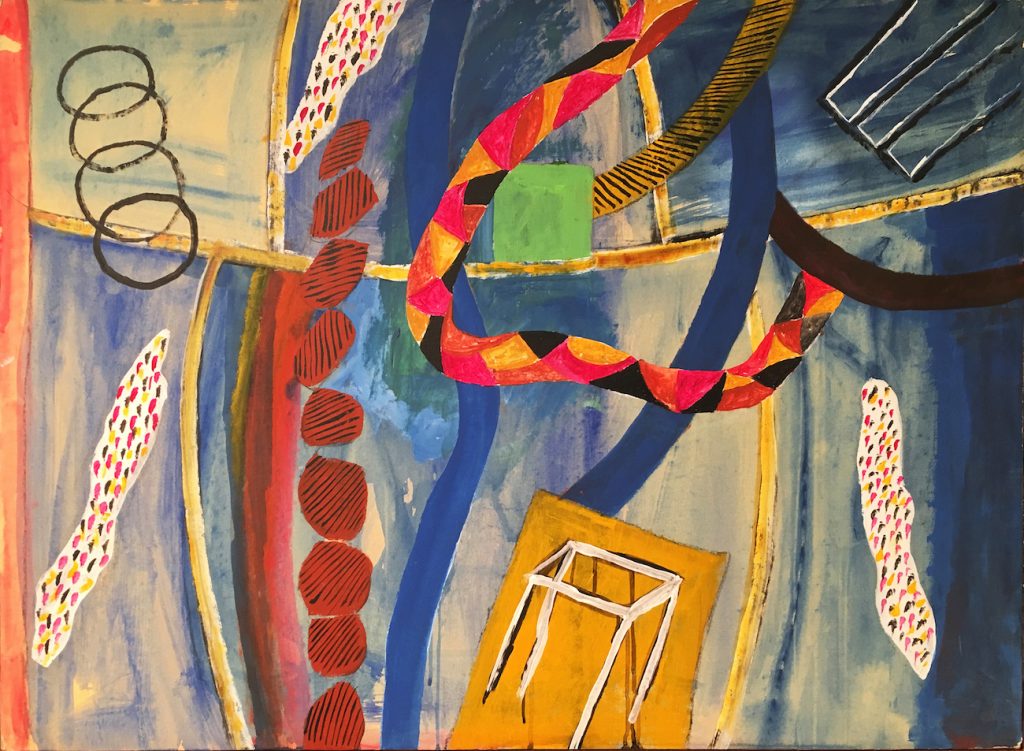04/ MUSEO CIVICO DI CASTELBUONO
Il castello dei Ventimiglia, a forma quadrata con quattro torri angolari, fu eretto nel 1317 dal Conte Francesco I di Ventimiglia. Dal 2012 è sede del Museo Civico di Castelbuono. Al suo interno la Cappella Palatina con gli stucchi dei Serpotta (1684), le collezioni permanenti di Archeologia, Urbanistica, Arte Sacra, la Pinacoteca d’Arte Moderna e Contemporanea e gli spazi per le mostre temporanee.
The Ventimiglia castle, square in shape with four corner towers, was build by Count Francesco I of Ventimiglia in 1317. Since 2012 it has been the head office of the Museo Civico di Castelbuono. Inside you can find the Palatine Chapel with the stucco by Serpotta (1684), the permanent collections of Archaeology, Urbanism, Sacred Art, the Pinacoteca of Modern and Contemporary Art and the spaces for temporary exhibitions.

La Maga Circe
La maga Circe è un’opera donata dall’Archivio Ignazio Moncada al Museo di Castelbuono. Il dipinto raccoglie molte delle tensioni a una rivisitazione del più profondo mito mediterraneo, nel trascorrere delle forme, apparizioni della fantasia e della memoria, in un colore dove non vi sono più dimensioni.
The Maga Circe
The Maga Circe (The Witch Circe) is a work donated by the Archivio Ignazio Moncada to the Museum of Castelbuono. The painting brings together many of the re-examinations of the deepest Mediterranean myth, in the elapse of forms, appearances of fantasy and memory to a color without dimentions.
Testo di Laura Barreca
La Maga Circe è una rivisitazione ideale legata al mito mediterraneo della maga che accoglie e ammalia Ulisse sull’isola di Eea, nel canto dell’Odissea omerica. Il dipinto è espressione della ricerca che Ignazio Moncada (Palermo, 1932 – Milano, 2012) intraprende a partire dalla fine degli anni Novanta, quando la pratica pittorica assume una forza evocativa nuova e cromaticamente intensa, disegnando partiture astratte di grandi dimensioni. Segni di natura organica e ampie campiture di colore sono risultato dell’adozione di un registro linguistico fluido che definisce una spazialità inedita sulla superficie del quadro: una sorta di “campo di forze” su cui l’artista orchestra liberamente forme e colori, scardinando l’impostazione geometrica delle opere precedenti, aprendosi ad una dimensione magica e intrinsecamente complessa. Durante le lunghe e produttive stagioni della sua carriera artistica, seppure lontano dalla Sicilia, Moncada non ha mai abbandonato la passione per i colori caldi, che nell’opera La Maga Circe incontrano la fascinazione verso la storia e il mito greco. Su tale dimensione immaginifica, fatta di spirali, nastri bicolore, serpentine, cerchi, accostati ad elementi fitomorfi, l’artista ci offre la sua rinnovata, poetica visione mediterranea.
L’opera è stata donata nel 2018 su iniziativa di Ruggero Moncada di Paternò, figlio dell’artista, e fa parte dell’itinerario “Ignazio Moncada. Attraverso Palermo” realizzato dall’Archivio Ignazio Moncada in collaborazione con Fondazione Sicilia (Palazzo Branciforte), Museo Guttuso (Villa Cattolica) e Museo Civico di Castelbuono, all’interno del progetto Palermo Capitale della Cultura 2018. E’ un Evento collaterale di Manifesta12.
Text by Laura Barreca
The Maga Circe is an ideal reinterpretation linked to the Mediterranean myth of the sorceress who welcomes and bewitches Ulysses on the island of Eea, in the Odyssey by Homer. The painting is an example of the research that Ignazio Moncada (Palermo, 1932 – Milan, 2012) began in the late nineties, when his pictorial practice assumes a new and chromatically intense, evocative force, drawing large abstract works of art. Signs of organic nature and large color backgrounds are the result of the adoption of a fluid linguistic register that defines an unprecedented spatiality on the surface of the painting: a sort of “field of forces” on which the artist freely orchestrates shapes and colors, undermining the geometric setting of previous works. In these series of works the artist seems to open up to a magical and more complex dimension. During the long and productive seasons of his artistic career, although far from Sicily, Moncada has never abandoned the passion for warm colours, which blend with the fascination of history and the Greek myths in works like The Maga Circe. On this imaginative dimension, made of spirals, two-color ribbons, serpentine lines, circles combined with phytomorphic elements, the artist offers us his renewed, poetic Mediterranean vision.
The work was donated to the museum in 2018 by Ruggero Moncada di Paternò, son of the artist, and is part of the itinerary “Ignazio Moncada. Through Palermo”, created by the Archivio Ignazio Moncada in collaboration with Fondazione Sicilia (Palazzo Branciforte), Museo Guttuso (Villa Cattolica) and Museo Civico di Castelbuono. The project is part of Palermo Capitale Cultura 2018 and is a collateral event of Manifesta12.
ORARI
Dal 01/10 al 31/03
Lunedì – Domenica | 09:30 – 17:00
Dal 01/04 al 30/09
Lunedì – Domenica | 09:30 – 13:00 / 15:00 – 18:30
OPENING HOURS
From 10/01 to 3/31
Monday – Sunday | 09:30 – 17:00
From 4/01 to 9/30
Monday – Sunday | 09:30 – 13:00 / 15:00 – 18:30


